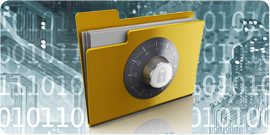Article Highlights:
- Above-the-Line Deduction
- Qualifications
- Employee Business Expenses
- Noncash Charitable Contribution
- Noncash Charitable Documentation Requirements
Many devoted teachers spend a significant amount of their own money on classroom supplies. Recognizing this, several years ago, Congress created a special deduction for teachers that would allow them to annually deduct up to $250 on their tax returns for classroom supplies—even if they don’t itemize their deductions. This type of deduction is termed an “above-the-line” deduction, and it is available even for taxpayers who claim the standard deduction.
Those who teach kindergarten through grade 12 are eligible for the special $250 deduction. In addition to teachers, those eligible include counselors, principals, and aides who work at least 900 hours during a school year. Because of the 900-hour requirement, many substitute teachers do not qualify for this above-the-line deduction.
However, most conscientious teachers spend far more than $250 for classroom supplies every year. What are the options for teachers who spend more than the $250 on classroom supplies or for teachers and other qualified individuals who do not meet the 900-hour test or other requirements to deduct the $250 above the line?
When eligible, teachers should always claim the above-the-line deduction first; then, they should consider the following possibilities for the excess amount. This advice may also help colleagues who are ineligible for the above-the-line deduction.
Employee Business Expense – One option is to claim expenses for classroom supplies beyond the $250 deduction as employee business expenses, which can be used as a miscellaneous itemized deduction. To claim employee business expenses, the teacher must itemize his or her deductions, which eliminates any benefit for those who use the standard deduction instead of itemizing (usually because the standard allowance is more than the total itemized deductions).
Even for those who itemize, miscellaneous itemized deductions are only deductible to the extent that they exceed 2% of the teacher’s adjusted gross income (AGI), so the deductible amount might be wiped out or substantially limited by the AGI reduction. In addition, if the teacher is subject to the alternative minimum tax, some or all of the employee business expense deduction will not be allowed.
Charitable Contribution – According to the tax code, the term “charitable contribution” refers to a contribution or gift for the use of a state, the United States itself, or the District of Columbia—or any political subdivision of any of the foregoing—but only if the contribution or gift is made for exclusively public purposes.
Since public schools are part of a political subdivision of a state, any contribution to a school, in either cash or goods, would be a charitable contribution.
Therefore, a teacher’s classroom supplies, if the teacher properly documents them and if the school provides a written acknowledgment, would qualify as a noncash charitable contribution. Caution: Supplies or equipment that the teacher retains are not considered a completed gift, and their cost does not qualify as a charitable contribution. For example, if a science teacher purchases a microscope that students use in the classroom, but the teacher then keeps it for personal use when the school year ends, the cost of the microscope would not be deductible as a charitable contribution.
To meet the requirements for noncash contributions, the teacher claiming the contribution must obtain and keep an acknowledgment from the school; the contents of this acknowledgement are based upon the value of the contribution claimed, as detailed below. The acknowledgment must be in the taxpayer’s possession before he or she files a return for the year in which the contribution was made, or before the due date (including extensions) for filing that return, whichever is earlier.
- Deductions of Less Than $250 – These acknowledgments must include
1. the name of the charitable organization,
2. the date and location of the charitable contribution, and
3. a reasonably detailed description of the property. - Deductions of at Least $250 but Not More Than $500 – These acknowledgments must include
1. the name of the charitable organization,
2. the date and location of the charitable contribution,
3. a reasonably detailed description (but not necessarily the value) of any property contributed, and
4. whether the qualified organization gave the taxpayer any goods or services as a result of the contribution (other than certain token items and membership benefits).If the taxpayer received goods and/or services in return, the acknowledgement must also include a description and good-faith estimate of their value. (The portion of the donation attributable to the goods and services that the taxpayer received is not deductible.)
- Deductions Over $500 but Not Over $5,000 – A taxpayer claiming a deduction over $500 but not over $5,000 for a noncash charitable contribution must have the same acknowledgement and written records as for the contributions described in the previous section (for donations of at least $250 but not more than $500). In addition, the records must include
1. how the property was obtained (for example, by purchase, gift, bequest, inheritance, or exchange);
2. the approximate date when the property was obtained or (if created, produced, or manufactured by the taxpayer) substantially completed; and
3. the cost or other basis (and any adjustments to that basis) of property held for less than 12 months and (if available) the cost or other basis of property held for 12 months or more. - Deductions Over $5,000 – There are additional requirements for noncash contributions of this size, including certified appraisals. However, the details are not included here.
If you have additional questions related to deducting classroom supplies, please give this office a call.




